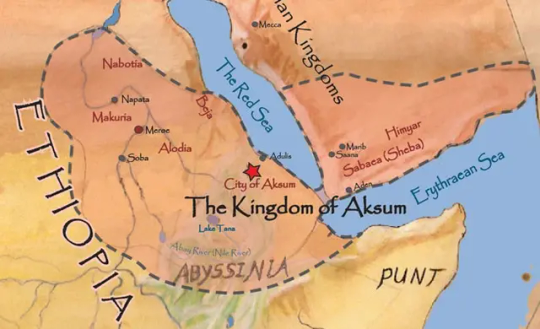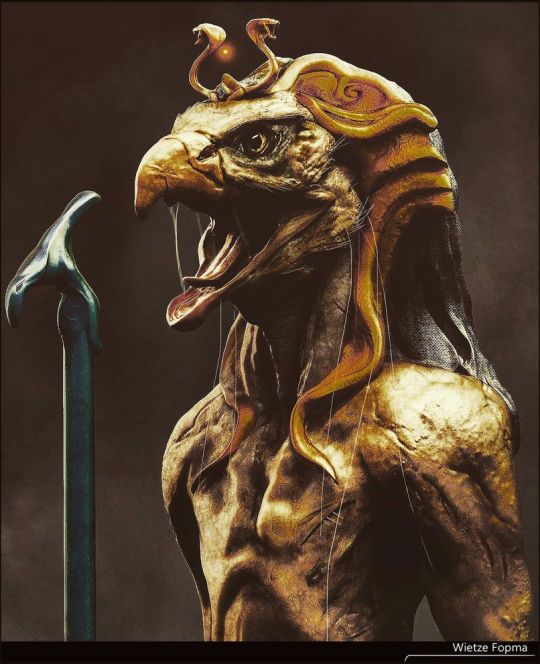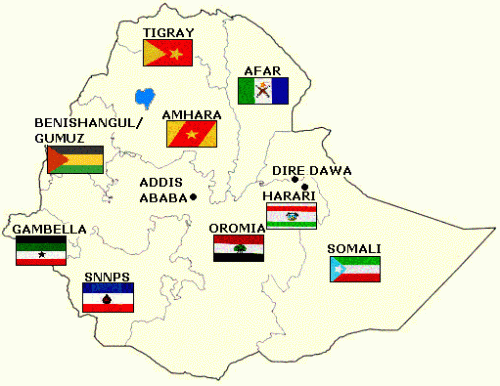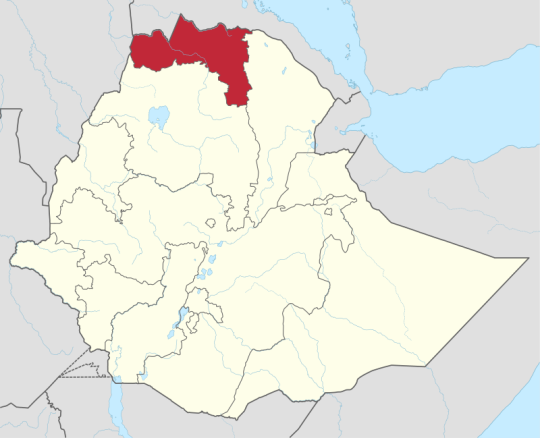#Dʿmt
Text
Time Travel Question 26: Ancient History XIV and Earlier
These Questions are the result of suggestions from the previous iteration.
This category may include suggestions made too late to fall into the correct grouping.
Please add new suggestions below if you have them for future consideration. All cultures and time periods welcome.
#Dʿmt#Time Travel#Ötzi#Bronze Age#Prehistory#The Bible#Siddhartha Gautama#Jesus of Nazareth#Religious History#Early Humans#Ötzi the Iceman#Textiles#History of Textiles#Ethiopian History#Slavic History#Lechitic Peoples#Lost Literature#The Tully Monster#Iberia#Spanish history#Ancient World
89 notes
·
View notes
Text

Almaqah or Almuqh was the Moon god of the ancient Yemeni kingdom of Saba'. He was also worshipped in Dʿmt and Aksum in Ethiopia and Eritrea.

Almaqah is considered a moon god, but Garbini and Pirenne have shown that the bull's head and the vine motif associated with him may have solar and dionysiac attributes. He was therefore a priest of Ra, the male counterpart of the sun goddess Shamash / Ishtar / Isis, who was also venerated in Saba, but as a tutelary goddess of the royal Egyptian dynasty



The ruling dynasty of Saba' regarded themselves as his seed.Almaqah is represented on monuments by a cluster of lightning bolts surrounding a curved, sickle-like weapon. Bulls were sacred to him.

Ethiopia is dedicated to the lunar God Almaqah, and contains an altar which represents a miniature model of the Great Temple in Yeha.


#african#afrakan#kemetic dreams#africans#brownskin#brown skin#afrakans#african culture#afrakan spirituality#almaqah#aksum#moon#moon diety#Amun ra#ra#egyptian#ancient kemet#kemeticism#kemet#kemetic paganism#kemetism#kemetic#sons of kemet#thoth#egyptology#ancient egypt#tigray#amhara#ethiopian#d'mt
130 notes
·
View notes
Text
Separatist and irredentist movements in the world
Tigray
Proposed state: Republic of Tigray
Region: Tigray Region, Ethiopia
Ethnic group: Tigrayan
Goal: independence
Date: 1999
Political parties: Tigray Independence Party
Militant organizations: Tigray People’s Liberation Front (TPLF)
Current status: war
History
10th century-5th century BCE - Dʿmt kingdom
2nd century-10th century CE - Kingdom of Aksum
1137-1889 - Medri Bahri
1769-1855 - Zemene Mesafint
1935-1941 - Italian conquest of Ethiopia
1941-1943 - British occupation
1943 - Woyane rebellion
1974-1991 - Ethiopian Civil War
1975 - creation of the TPLF
1998-2000 - Eritrean-Ethiopian War
2020-present - Tigray War
Tigray is often regarded as the cradle of Ethiopian civilization. It was the center of the Dʿmt kingdom and also part of the Kingdom of Aksum and of the Medri Bahri kingdom.

Between the mid-18th and mid-19th centuries, Ethiopia was divided into several regions with no effective central authority. In Tigray, the position of Governor of Tigray was established to rule the area.
In 1943, an uprising against the centralization process undertaken by Emperor Haile Selassie I took place. The region was peaceful until the beginning of the Ethiopian Civil War in 1974 during which the TPLF was established. This organization also participated in the Eritrean-Ethiopian War.
The Tigray war started in 2020 after the refusal of the TPLF, which used to be part of the Ethiopian governing coalition until 2019, to merge into a new party created by Prime Minister Abiy Ahmed and the central government’s refusal to recognize the election for Tigray’s state council. Armed movements from other regions of Ethiopia have joined the war on the TPLF’s side, together with the Tigray Defense Forces and the Tigray Independence Party.
Tigrayan people
The Tigrayan people mainly live in Ethiopia. There are around 7 million of them.

They speak Tigrinya, a Semitic language of the Afro-Asiatic family, and are mostly Oriental Orthodox Christians.
Tigrayans group in social institutions whose relations are based on mutual rights and bonds. Customary law is a very important part of their culture and is widely practiced.
Vocabulary
ደዐመተ (Dʿmt) - Dʿmt kingdom
ሓይልታት ምክልኻል ትግራይ (ḥayilitati mikiliẖali tigirayi) - Tigray Defense Forces
ህዝባዊ ወያነ ሓርነት ትግራይ (ḥəzbawi wäyanä ḥarənnät təgray) - Tigray People’s Liberation Front
ቀዳማይ ወያነ (k’edamayi weyane) - Woyane rebellion
ክልል ትግራይ (kilili tigirayi) - Tigray Region
መንግሥተ አኵስም (menigišite ākwisimi) - Kingdom of Aksum
ምድሪ ባሕሪ (midirī baḥirī) - Land of the Sea
ናይኢትዮጵያ ፌዴራላዊ ዴሞክራሲያዊ ሪፐብሊክ (Nay-Ítiyop’iya Fēdēralawī Dēmokirasīyawī Rīpebilīki) - Federal Democratic Republic of Ethiopia
ነጻነት (nets’aneti) - independence, freedom
ትግራዎት (tigirawoti) - Tigrinya people
ትግርኛ መኮነን (tigriññā mekoneni) - Governor of Tigray
ትግርኛ (tigriññā) - Tigrinya language
ውግእ (wigi’i) - war
ውግእ ትግራይ (wigi’i tigirayi) - Tigray War
ዘመነ መሳፍንት (zemene mesāfint) - Age of Princes
7 notes
·
View notes
Note
wait, what? name the african civilisations?? egypt doesn't count, that's more fertile crescent.
Egypt totally counts but whatever List of African kingdoms Non-exhaustive list of known pre-colonial kingdoms and empires with their capital cities on the African continent.North Africa Egyptian Empire (3150–30 BCE)Kingdom of Kerma (2500-1500 BCE)Kingdom of Kush (1070 BCE – 350 CE)Carthaginian Empire (650-146 BCE)Kingdom of Blemmyes (600 BCE-3rd c. CE)Garamantes (500 BCE-700 CE)Ptolemaic Kingdom (306-30 BCE)Kingdom of Mauretania (285 BCE-431 CE and again (533–698 CE)Kingdom of Numidia (202-46 BCE)Kingdom of Makuria (340-1317 CE)Kingdom of Nobatia(350-650 CE)Kingdom of the Vandals and Alans (435 – 534 CE)Post Classical Kingdom of Alodia (7th c.-1504 CE)Kingdom of Nekor (710–1019 CE)Barghawata Confederacy (744–1058 CE)Emirate of Sijilmassa (758–1055 CE)Rustamid imamate (Tahert area, 767–909 CE)Idrisid dynasty (Morocco, 789 - 974 CE)Fatimid Caliphate (910 - 1171)Hammadid dynasty (Western Ifriqiya, 1014–1152 CE)Zirid dynasty (Ifriqiya, 1048–1148 CE)Almoravid dynasty (Morocco, 1040–1147 CE)Khurasanid dynasty (1059–1128 & 1148–1158 CE)Almohad dynasty (Morocco, 1121–1269 CE)Ayyubid dynasty (Egypt, 1171–1254 CE)Hafsid dynasty (Ifriqiya, 1229–1574 CE)Kingdom of Tlemcen (Oranie, 1235–1556 CE)Marinid dynasty (Morocco, 1248–1465 CE)Mamluk Sultanate (Egypt, 1250–1517 CE)Wattasid dynasty (Morocco, 1420–1554 CE)ModernSultanate of Sennar (1504–1821 CE)Saadi principality of Sus and Tagmadert (1509–1554 CE)Saadi dynasty (Morocco, 1554–1659 CE)Naqsid principality of Tetouan (1597–1673 CE)Sultanate of Darfur (1603–1874 & 1898–1916 CE)Republic of Bou Regreg (1627–1668 CE)Alaouite dynasty (Morocco, 1666 - current CE)Muhammad Ali dynasty (Egypt, 1914–1951 CE)Senussi dynasty (Libya, 1951–1969 CE)East Africa Kingdom of Punt - (2400-1069 BCE)Kingdom of Dʿmt (c. 980-400 BCE)Aksumite Empire (50–937 CE)Post Classical Kingdom of Bazin (9th century CE)Kingdom of Belgin (9th century CE)Kingdom of Jarin (9th century CE)Kingdom of Qita'a (9th century CE)Kingdom of Nagash (9th century CE)Kingdom of Tankish (9th century CE)Sultanate of Mogadishu (10th century–16th century CE)Kilwa Sultanate (960-1513 CE)Kingdom of Medri Bahri (1137-1890 CE)Ethiopian Empire (1137–1974 CE)Zagwe dynasty (1137–1270 CE)Solomonic dynasty (1270–1974 CE)Sultanate of Ifat (1285–1415 CE)Warsangali Sultanate (1298–1886 CE)Kingdom of Buganda (1300–present CE)kingdom of Burundi (1500-1966 CE)kingdom of Rwanda (1300-1959 CE)Ajuran Sultanate (14th century–17th century CE)Adal Sultanate (1415–1555 CE)Modern Sennar Sultanate (1502–1821 CE)Empire of Kitara [1]Sultanate of the Geledi (late 17th century–late 19th century CE)Sultanate of Aussa (fl. 1734–present CE)Majeerteen Sultanate (mid-18th century–early 20th century CE)Kingdom of Gomma (early 19th century–1886 CE)Kingdom of Jimma (1830–1932 CE)Kingdom of Gumma (1840–1902 CE)Sultanate of Hobyo (1880s–1920s CE)Dervish State (1896–1920 CE)West AfricaAncient Dhar Tichitt Civilization (1600-300 BCE)Nok Civilization (1000 BCE-300 CE)Djenné-Djenno Civilization (250 BCE-900 CE)Bura Civilization (300-1300 CE)Post Classical EditGhana Empire (700-1240 CE)Kingdom of Nri (948–1911 CE)Bonoman (11th–19th century CE)Mossi Kingdoms (11th century–1896 CE)Takrur (11th - 13th century)Benin Empire (1180-1897 CE)Mali Empire (1235-1600 CE)Jolof Empire (1350-1549 CE)Wolof Empire (1350–1889 CE)Bornu Empire (1380-1893 CE)Oyo Empire (1400–1895 CE)Kingdom of Dagbon (1409- Ce?)Kingdom of Sine (14th-19th century CE)Songhai Empire (1464-1591 CE)Shilluk Kingdom (1490–1865 CE)Empire of Great Fulo (1490-1776 CE)Kingdom of Saloum (1494-1969 CE)ModernMamprussi (16th century CE - ?)Kaabu Empire (1537-1867 CE)Kingdom of Cayor (1549-1879 CE)Kingdom of Baol (1555-1874 CE)Kingdom of Dahomey (1600–1900 CE)Aro Confederacy (1690-1902 CE)Asante Union (1701–1894 CE)Kong Empire (1710–1894 CE)Bamana Empire (1712-1861 CE)Sokoto Caliphate (1804-1904 CE)Wassoulou Empire (1878-1898 CE)Central Africa Ancient Sao Civilisation (6th century BCE-16th century CE)Post ClassicalKanem–Bornu Empire (9th century-1900 CE)Kingdom of Kongo (1400–1888 CE)ModernSultanate of Bagirmi (1522-1897 CE)Luba Empire (1585–1885 CE)Kingdom of Ndongo (16th century-? CE)Kingdom of Matamba (1631-1744 CE)Wadai Empire (1635-1912 CE)Lunda Empire (1660–1887 CE)Kingdom of Lunda (1665-1887 CE)Kuba Kingdom (1600–present CE)Southern Africa Post ClassicalKingdom of Mapungubwe (9th century–14th century CE)Kingdom of Zimbabwe (1220–1450 CE)Kingdom of Mutapa (1430-1760 CE)Kingdom of Butua (1450-1683 CE)Torwa dynasty (1450-1683 CE)Modern Rozwi Empire (1660-1866 CE)Ndwandwe Kingdom (1780-1819 CE)Zulu Kingdom (1816–1897 CE)Merina Kingdom (18th century- 1896 CE)Mthethwa Paramountcy (18th Century - 1820 CE)
23 notes
·
View notes
Photo

Classical Indigenous African Civilizations Pre-asiatic/Pre-European Invasion 250,000 BC - 350 BC North🌍 Egyptian Empire (3150–30 BCE) Kingdom of Kerma (2500–1500 BCE) Kingdom of Kush (1070 BCE–350 CE) Carthaginian Empire (650–146 BCE) Kingdom of Blemmyes (600 BCE–3rd c. CE) Garamantes (500 BCE–700 CE) Kingdom of Mauretania (285 BCE–431 CE and again (533–698 CE) Kingdom of Numidia (202–46 BCE) Kingdom of Makuria (340–1317 CE) Kingdom of Nobatia (350–650 CE CE) Kingdom of Alodia (7th c.–1504 CE) Kingdom of Nekor (710–1019 CE) East🌍 Kingdom of Punt (2400–1069 BCE) Kingdom of Dʿmt (c. 980–400 BCE) Aksumite Empire (50–937 CE) Swahili Coast (50 AD–) Kingdom of Bazin (9th century CE) Kingdom of Belgin (9th century CE) Sultanate (960–1513 CE) Kingdom of Medri Bahri (1137–1890 CE) Ethiopian Empire (1137–1974 CE) Zagwe dynasty (1137–1270 CE) Solomonic dynasty (1270–1974 CE) Sultanate of Ifat (1285–1415 CE) Warsangali Sultanate (1298–1886 CE) Kingdom of Buganda (1300–present CE) Kingdom of Burundi (1500–1966 CE) Kingdom of Rwanda (1300–1959 CE) West🌍 Nok Civilization (1000 BCE–300 CE) Djenné-Djenno Civilization (250 BCE–900 CE) Bura Civilization (300–1300 CE) Ghana Empire (300–1240 CE) Kingdom of Nri (948–1911 CE) Bonoman (11th–19th century CE) Mossi Kingdoms (11th century–1896 CE) Takrur (11th–13th century) Benin Empire (1180–1897 CE) Mali Empire (1235–1600 CE) Jolof Empire (1350–1549 CE) Wolof Empire (1350–1889 CE) Bornu Empire (1380–1893 CE) Oyo Empire (1400–1895 CE) Kingdom of Dagbon (1409–Ce?) Kingdom of Sine (14th–19th century CE) Songhai Empire (1464–1591 CE) Shilluk Kingdom (1490–1865 CE) Empire of Great Fulo (1490–1776 CE) Kingdom of Saloum (1494–1969 CE)8 Central🌍 Sao Civilization (6th century BCE–16th century CE) Kanem–Bornu Empire (9th century–1900 CE) Kingdom of Kongo (1400–1888 CE) Southern🌍 Kingdom of Mapungubwe (9th century–14th century CE) Kingdom of Zimbabwe (1220–1450 CE) Kingdom of Mutapa (1430–1760 CE) Kingdom of Butua (1450–1683 CE) Torwa dynasty (1450–1683 CE) #westafrica #eastafrica #southernafrica #northafrica #centralafrica #ancientafrica #precolonial https://www.instagram.com/p/B1fcafxhJvq/?igshid=1u3z4wpamx9om
0 notes
Text
Since the enactment of the Immigration and Nationality Act of 1965, an estimated 800,000 to 900,000 Africans have immigrated to the US, accounting for just 3.3% of total immigration. Although Black History Month observances typically focus on native Black Americans whose ancestors came to the US by means of the Atlantic slave trade — and Africans can be of any race — I’m never the less using the opportunity to shed light on the contributions of more recent African immigrants in Los Angeles. For this entry of the No Enclave series, the focus are Eritrean-Angelenos.
ERITREA
Eritrea is a country in the Horn of Africa, which it shares with Djibouti, Ethiopia, Somalia, and Somaliland. It is separated from the Arabian Peninsula by the Red Sea, the Bab-el-Mandeb Strait of which is only about 40 kilometers wide. Eritrea is a multi-ethnic state with nine recognized ethnic groups. The most numerous people, the Tigrinya, comprise roughly 55% of the total population, and speak a Semitic language of the same name. Smaller populations include the Tigre, Saho, Kunama, Bilen, and Rashaida. Eritrea is about 117,600 km2 in area, making it a bit smaller than hte state of Pennsylvania and a bit larger than Ohio. The capital and largest city is Asmara.
A BRIEF ERITREAN HISTORY
Eritrea’s Red Sea coast is believed to have been inhabited by humans more or less continuously for more than 125,000 years. The Land of Punt is mentioned by its trading partners, the ancient Egyptians, in writing from the 25th Century BCE. Between the 10th and 5th centuries, the Kingdom of Dʿmt flourished, with its capital believed to have been located near the modern city of Yeha. The Ona culture arose in the vicinity of Asmara between the 9th and 5th centuries.
The Kingdom of Aksum existed from roughly 100–940 CE and covered Eritrea and the Tigray region of Ethiopia. A major player along the trade route between Rome and India, the Aksum was regarded by Mani (the Persian prophet and founder of Manichaeism) as one of the four great powers of his time (the others being, Persia, Rome, and China). After the decline of Aksum, the Kingdom of Medri Bahri (Tigrinya: ምድሪ ባሕሪ) arose and dominated the Eritrean Highlands from 1137–1890, when Italy created its first African colony, Colonia Eritrea.
The British army conquered Eritrea during World War II and the victorious Allies debated about Eritrea’s status for several years after taking banishing the Fascists. The UK and US favored ceding most of the country to Ethiopia whereas the USSR favored returning it to Italy. Emperor Haile Selassie of Ethiopia wished to annex Eritrea and Somaliland and in 1952, created the Federation of Ethiopia and Eritrea. Soon afterward the Ethiopian emporer revoked Eritrea’s autonomy, igniting the Eritrean War of Independence which lasted for three decades and claimed the lives of an estimated 230,000 people.
In 1991, the Eritrean People’s Liberation Front (EPLF) and the Ethiopian People’s Revolutionary Democratic Front (EPRDF) toppled the People’s Democratic Republic of Ethiopia (PDRE) from power, ending Ethiopian control of Eritrea. In April 1993, in a referendum supported by Ethiopia’s new government, a vast majority of Eritreans voted in favor of independence. Independence hasn’t yet signaled the flourishing of a new democracy, however. The EPLF immediately established a one-party state in which there have been no elections in the quarter century of independence.
Although the economy has improved in recent years, remittances from overseas Eritreans account for an estimated 32% of the gross domestic product. Furthermore, a United Nations Commission of Inquiry on Eritrea undertaken in 2015 alleged that the Eritrean government engages in “systemic, widespread and gross human rights violations.” Human Rights Watch described Eritrea as a “dismal human rights situation, exacerbated by indefinite military conscription” which has “led thousands of Eritreans to flee every month.” The government banned the private press in 2001, and the Committee to Protect Journalists granted Eritrea the top position in its “10 Most Censored Countries” managing even to edge out North Korea.
ERITREAN-AMERICANS
With an estimated population of 4,782, California is home to the largest population of Americans born in the 24-year-old nation of Eritrea. However, since people with roots in what’s now Eritrea were previously counted as Ethiopians, estimates of the Eritrean-American population are possibly somewhat inaccurate. As with Ethiopians, the metropolitan area with the largest population of Eritrean-Americans is that of Washington, DC. Los Angeles is home to the nation’s second largest Ethiopian population, though — by some estimates 96,000. Presumably, some of those Angelenos are of Eritrean, or mixed Ethiopian-Eritrean heritage.
ERITREAN-LOS ANGELES AND SOUTHERN CALIFORNIA
Unlike Ethiopian-Angelenos, Eritrean-Angelenos have no titular ethnic enclave along the lines of Midtown‘s Little Ethiopia. And whilst the local Eritrean diaspora maintain a comparatively low profile, there are several prominent local Eritreans and important cultural contributors.
Chiham Ali Abdu
One of the highest profile Los Angeles-born Eritreans is Ciham Ali Abdu, believed to be currently imprisoned in Eritrea. When just fifteen years old, the American citizen was abducted near Eritrea’s border with Sudan, possibly as retaliation for her father — the country’s former minister of information — fleeing the nation. Her exact whereabouts and condition are unknown.
One of the fourteen killed in the 2015 San Bernardino attacks, Isaac Gebreslassie Amanios, was Eritrean. He moved to California in 2000 to escape the violence and oppression of his homeland. Amanios worked as a San Bernardino County environmental health specialist and shared a cubicle with one of the attackers. He was survived by his wife, Hiwet, and children Bruk, Joseph, and Milka.
Several actresses of Eritrean ancestry live in Los Angeles. Ella A. Thomas was born in Asmara in 1981 to an Eritrean mother and an American father. Sabrina Aman was born in Virginia to Eritrean parents, raised in Qatar, and now lives in Los Angeles. Tiffany Sarac Haddish was born in South Los Angeles in 1979 and is of both Eritrean and Ethiopian ancestry.
Los Angeles is home to at least two Eritrean singers, Habtom Debessai and Aron Tadesse, the latter of whom owns the Industry Jazz Café in Culver City. Rapper Nipsey Hu$$le (né Ermias Asghedom) was born in 1985 and raised in the Hyde Park neighborhood. Rapper Sador “Sandman Negus” Fasehaye was born in Bulgaria to Eritrean parents but lived in Hyde Park from the age of seven until his murder in nearby View Park in 2012.
Los Angeles poet Magdalawit Makonnen is of Ethiopian and Eritrean ancestry. Long distance runner Mebrahtom “Meb” Keflezighi was born in Asmara in 1975. His family moved to San Diego in 1987 and he attended school at the University of California, Los Angeles. Eritrean-Angeleno blogger Neyat Yohannes is a Los Angeles native who now lives in the San Francisco Bay.
ERITREAN CUISINE
Eritrean cuisine resembles the better known cuisine of Ethiopia. Most meals feature a spicy stew called tsebhi in Tigrinya (wat in Amharic) and accompanied by a sour flatbread called taita (injera in Amharic). As a primarily coastal region, seafood plays a larger role in Eritrean cuisine than it does the cuisine of its larger, landlocked neighbor. Eritrean cuisine also bears signs of its colonial relationships with the Ottoman and Italian empires, especially in the prevalence of tomatoes and the existence of Italian Eritrean cuisine — exemplified by dishes like pasta al sugo e berbere’.
Eritreische Kaffeezeremonie (Image: Nicola Holtkamp)
The most popular caffeinated beverage is coffee, first cultivated in Ethiopia and a centrally important part of the daily life in several countries in the region. Popular alcoholic beverages include suwa (tella in Amharic), a beer made from fermented sorghum, teff, and sometimes other grains; and the honey wine, mes (tej in Amharic).
Industry Cafe & Jazz (Image: Joan S.)
There are at least two local restaurants serving Eritrean cuisine. The aforementioned Industry Cafe & Jazz offers Eritrean dishes as well as Ethiopian, Southern/Soul Food, and live music. It’s located in Culver City’s McManus neighborhood and is served by Culver City Bus’s 1 line and LADOT’s Commuter Express 437 line.
Vegetarian combo and an order of Key Wat. So good. (Image: Anthony “Danger” D.)
There’s also Zula Restaurant. Naturally it’s located in Inglewood, the capital of Los Angeles’s African restaurant scene. It’s currently served by Metro’s 212/312 line. Provided it remains in the same location, it will be served by the under-construction Crenshaw/LAX rail line, expected to open in 2019.
ERITREAN COMMUNITY ORGANIZATIONS
SELLA Family (Image: United Eritrean LA)
There are a handful of local organizations serving the Eritrean-American community. The United Eritrean Association was organized in 1993 and oversees the School of Eritrean Languages in Los Angeles. There are a couple of Eritrean churches including, the Bisrat Wengel Eritrean Church Los Angeles, founded in 1999, and the Medhani-Alem Orthodox Church in Inglewood.
ERITREAN OBSERVANCES
Eritrean Martyrs’ Day In Los Angeles 6/20/2015 (Image: Dawit Asghedom)
Aside from religious observances, the two main Eritrean holidays observed locally appear to be Eritrean Martyrs’ Day (20 June) and Independence Day (24 May). In Los Angeles County, Martyrs’ Day observances have typically taken place at either Rogers Park (Inglewood) or Eucalyptus Park (Hawthorne). In Orange County, observances seem always to have taken place in Twila Reid Park in Anaheim.
Los Angeles Eritrean 23rd Independence Day Celebration Report (Image: East Afro)
Eritrean Independence Day celebrations typically take place in the South Bay region — in the past at Sheraton Gateway Los Angeles Hotel in Westchester, a Hollywood Park Casino, which is in Inglewood, not Hollywood.
FURTHER READING
Mesghina Ghebremedhin’s The Adaptation of Eritrean Migrants in the Los Angeles City Area (1997, Biola University, School of Intercultural Studies).
Eric Brightwell is an adventurer, writer, rambler, explorer, cartographer, and guerrilla gardener who is always seeking writing, speaking, traveling, and art opportunities — or salaried work. He is not interested in generating advertorials, clickbait, listicles, or other 21st century variations of spam. Brightwell has written for Angels Walk LA, Amoeblog, Boom: A Journal of California, diaCRITICS, Hidden Los Angeles, and KCET Departures. His art has been featured by the American Institute of Architects, the Architecture & Design Museum, the Craft & Folk Art Museum, Form Follows Function, Los Angeles County Store, the book Sidewalking, Skid Row Housing Trust, and 1650 Gallery. Brightwell has been featured as subject in The Los Angeles Times, Huffington Post, Los Angeles Magazine, LAist, Eastsider LA, Boing Boing, Los Angeles, I’m Yours, and on Notebook on Cities and Culture. He has been a guest speaker on KCRW‘s Which Way, LA? and at Emerson College. Art prints of Brightwell’s maps are available from 1650 Gallery and on various products from Cal31. He is currently writing a book about Los Angeles and you can follow him on Facebook, Instagram, and Twitter.
Click here to offer financial support and thank you!
No Enclave — Exploring Eritrean-Los Angeles Since the enactment of the Immigration and Nationality Act of 1965, an estimated 800,000 to 900,000 Africans have immigrated to the US, accounting for just 3.3% of total immigration.
#Black History Month#Eritrea#Eritrean-Americans#Ethiopia#Ethiopian-Americans#Horn of Africa#No Enclave
0 notes